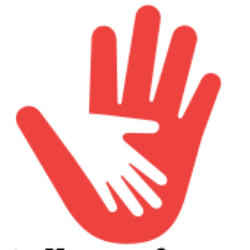Future-Proofing Your Design Career: Skills for the Next Decade

The rapid transformation of the design industry necessitates that professionals be agile in adapting to newer tools and platforms. While foundational software like the Adobe Suite continues to hold its ground as an industry staple, there’s a surge in the adoption of newer design platforms. Tools like Sketch, Figma, and InVision are no longer just alternatives—they’re becoming integral parts of modern design workflows, especially in the domains of UI/UX design. Moreover, with the dawn of Augmented Reality and Virtual Reality, design spaces are pushing the boundaries beyond traditional screens. To remain competitive, designers need to not only familiarize themselves with these advanced tools but become proficient in leveraging their unique features. The digital design palette is broadening, and being conversant with a diverse toolset is the key to crafting designs that resonate in the contemporary era.
Mastering UI/UX and Interaction Design
The digital age is increasingly centered on the user experience. Websites, apps, and digital platforms are continually competing for user attention, making the role of UI/UX designers more critical than ever. It’s no longer sufficient to design just for aesthetics; a designer must prioritize functionality and user-centricity. This involves a deep understanding of user personas, predicting user pathways, and ensuring intuitive navigation. Aspects like wireframing, prototyping, and usability testing have become foundational to the design process. Moreover, with the integration of technologies like voice recognition and AI-driven interfaces, interaction design is continually evolving. To thrive in this dynamic landscape, designers must continually update their knowledge, refine their skills, and be ready to adapt to the latest trends in user interaction.
Embracing Sustainability in Design
The global conversation is tilting heavily towards sustainability, and the design world is no exception. The next decade will not only appreciate but expect environmentally conscious designs across sectors. This sustainability push isn’t just about the final product but spans the entire design process. Designers are now considering factors like the environmental impact of their materials, the longevity of their designs, and the circularity of their products (how they can be reused, repurposed, or recycled). Furthermore, clients and consumers are increasingly valuing eco-friendly designs, making it a market-driven necessity. Beyond just being a trend, sustainable design represents a broader shift in global consciousness, and designers play a pivotal role in this transformation. Embracing sustainability is about foreseeing the future, understanding the broader ecological context, and integrating these insights into the very fabric of design decisions.
Developing Soft Skills and Emotional Intelligence
While the technicalities of design are undeniably crucial, the human side of the profession is gaining unprecedented importance. Soft skills—those interpersonal attributes that enhance an individual’s interactions, job performance, and career prospects—are becoming pivotal in the design industry. Effective communication, for instance, is not merely about conveying ideas but translating the intricacies of design to clients, stakeholders, and even to one’s team. Teamwork, too, is of essence, as design projects often involve cross-functional collaborations where mutual respect and understanding are vital. Then there’s empathy—a designer’s ability to resonate with their audience’s needs, desires, and pain points. This emotional connection can be the distinguishing factor in designs that are simply good versus those that are truly exceptional. Additionally, in a world rapidly pivoting to remote collaborations, being adaptable and mastering the art of virtual communication has become indispensable. These soft skills, often overshadowed by technical proficiencies, are now emerging as game-changers in the realm of design.

Cross-disciplinary Knowledge and Collaboration
The era where designers worked exclusively within the boundaries of their field is fading. Today’s design challenges often intersect with diverse disciplines—be it technology, psychology, anthropology, or even business. A designer’s ability to wear multiple hats, understanding coding basics, or grasping the nuances of consumer behavior, can be immensely beneficial. For example, when a designer has a foundational knowledge of coding, it simplifies the transition from design to development, ensuring that the final product stays true to the initial vision. Similarly, insights into business strategies can help designers align their creations with larger organizational goals. This interdisciplinary approach not only broadens the horizons for designers but also paves the way for innovative solutions that are holistic and well-rounded. By fostering collaborations and expanding their knowledge base, designers can position themselves at the nexus of creativity and practicality, leading to groundbreaking work that transcends traditional boundaries.
Conclusion: Adapting to an Ever-changing Landscape
The world of design is inherently fluid, constantly molded by emerging technologies, shifting societal values, and evolving market dynamics. While the core principles of design—balance, contrast, rhythm, and harmony—remain unchanged, the modalities and mediums are in perpetual flux. It’s this very dynamism that makes the field exhilarating yet demanding. For design professionals, the challenge is two-fold: staying rooted in timeless principles while simultaneously navigating the currents of change. This demands a commitment to lifelong learning, a willingness to step out of one’s comfort zone, and the agility to adapt. But with these challenges come unparalleled opportunities—opportunities to redefine paradigms, craft memorable experiences, and shape the design narrative for the future. As the next decade unfolds, those poised to leave a mark will be the ones who not only anticipate change but also embrace and drive it.

